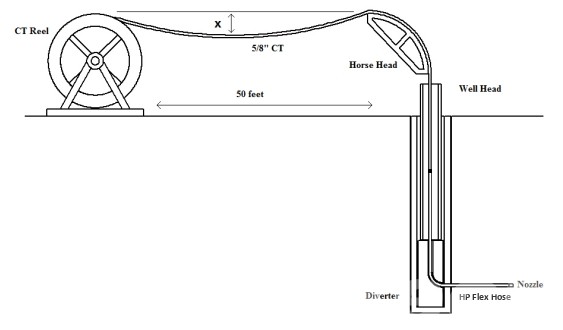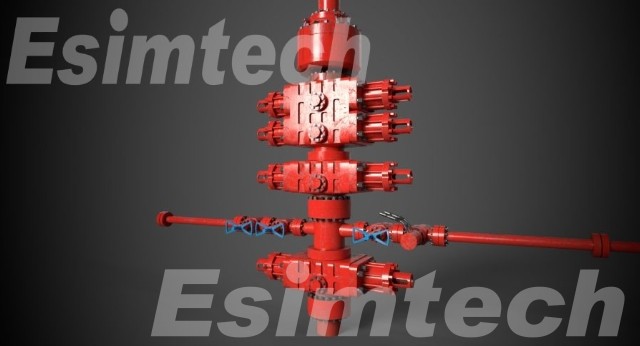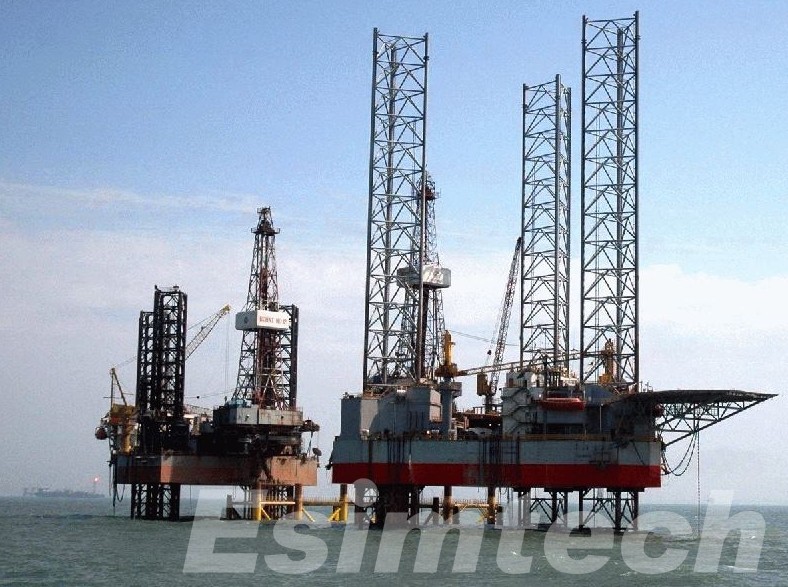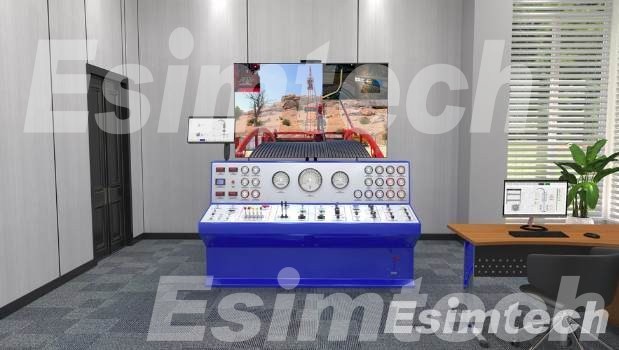A Comprehensive Guide to Coiled Tubing Drilling in the Oil and Gas Industry
Coiled tubing drilling (CTD) in oil drilling is a versatile and efficient method for drilling and completing wells. It uses a continuous length of small-diameter steel pipe that is injected into the wellbore to drill or complete the well. CTD is a cost-effective and environmentally friendly alternative to conventional drilling methods, and it is becoming increasingly popular in the oil and gas industry.
Essential Components of a Coiled Tubing Drilling System
A coiled tubing system is a versatile and valuable tool used in various oil and gas production operations. It consists of a continuous length of small-diameter tubing that is spooled on a reel and injected into a wellbore.

The main components of a coiled tubing system include:
- Coiled tubing reel: The coiled tubing reel is a large, motorized spool that stores and transports the coiled tubing. The reel is equipped with a hydraulically driven level wind system that ensures even spooling and prevents the tubing from tangling or overlapping.
- Injector head: The injector head is the main interface between the coiled tubing and the wellbore. It consists of a hydraulically driven injector guide arch and a series of grippers that grip and propel the tubing into the well. The injector head also contains a control system that regulates the tubing injection rate and pressure.
- Power pack: The power pack provides hydraulic power to the injector head, reel, and other components of the coiled tubing system. It typically consists of a diesel engine, hydraulic pump, and reservoir.
- Control cabin: The control cabin houses the control systems for the coiled tubing system. It contains a series of monitors and displays that provide real-time data on the operation of the system, including tubing depth, pressure, and flow rate.
5. Ancillary equipment: Several ancillary pieces of equipment are commonly used with coiled tubing systems, including:
- Swivel joint: The swivel joint allows the coiled tubing to rotate freely while it is being injected into the wellbore.
- Hose: The hose connects the injector head to the swivel joint and provides a passage for hydraulic fluid and wellbore fluids.
- Blowout preventer (BOP): The BOP is a safety device that prevents uncontrolled flow from the wellbore. It is typically installed on top of the wellbore and can be closed in an emergency to prevent the release of oil, gas, or other fluids.

6. Service and support equipment: Several service and support equipment are essential for coiled tubing operations, including:
- Coiled tubing trucks: These trucks transport the coiled tubing system and ancillary equipment to the well site.
- Coiled tubing units (CTUs): These self-contained units provide the power and control systems for coiled tubing operations.
- Coiled tubing specialists: These experienced professionals operate and maintain coiled tubing systems and ensure the safe and efficient conduct of coiled tubing operations.
Advantages of Coiled Tubing Drilling System
Coiled tubing systems offer several advantages over conventional drilling methods, including:
- Reduced wellbore damage: Coiled tubing’s flexibility allows it to navigate curved wellbores and tight formations without causing damage, minimizing the risk of formation damage and lost circulation.
- Increased wellbore access: Coiled tubing can reach greater depths and access wellbore areas that are inaccessible to conventional drilling methods.
- Lower operating costs: CTD operations typically require less personnel and equipment than conventional drilling methods, resulting in lower operating costs.
- Versatility: CTD can be used for a wide range of operations, including wellbore cleanout, fracturing, acidizing, and production logging.
- Reduced environmental impact: CTD has a smaller footprint and requires less energy than conventional drilling methods, resulting in reduced environmental impact.
- Enhanced safety: CTD operations generally have a lower risk of accidents compared to conventional drilling methods.

Applications of Coiled Tubing Drilling
CTD is used for a variety of applications, including:
- Drilling and completing vertical and horizontal wells: CTD can be used to drill and complete both vertical and horizontal wells. CTD is particularly well-suited for drilling horizontal wells because it can be used to drill long, horizontal sections without the need for intermediate casing strings.
- Workover and remedial operations: CTD can be used to perform workover and remedial operations, such as cleaning out wells, performing cement squeezes, and installing artificial lift systems. CTD is a cost-effective and efficient method for performing workover and remedial operations because it does not require the use of a drilling rig.
- Wellbore cleanout and stimulation: CTD can be used to clean out wells and perform stimulation operations, such as acidizing and fracturing. CTD is a cost-effective and efficient method for cleaning out wells and performing stimulation operations because it does not require the use of large amounts of water or drilling fluids.
- Pipeline pigging and cleaning: CTD can be used to pig and clean pipelines. CTD is a cost-effective and efficient method for pigging and cleaning pipelines because it does not require the pipeline to be taken out of service.

Benefits of Simulation Technology Used in Coiled Tubing Drilling
Simulation technology offers several significant benefits for CTD operations:
Improved planning and decision-making
Coiled tubing simulator allow engineers to analyze complex wellbore scenarios, taking into account factors such as geology, formation properties, drilling fluids, and equipment limitations. This enables them to make informed decisions about drilling parameters, wellbore trajectory, and potential risks.
Optimized drilling performance
By simulating the drilling process, engineers can identify the optimal combination of drilling parameters, such as rate of penetration, mud weight, and pump rate. This helps to maximize drilling efficiency, reduce drilling time, and minimize formation damage.
Reduced risk of operational problems
Simulation models can predict potential operational problems such as lost circulation, stuck pipe, and wellbore instability. This allows engineers to take preventive measures and develop contingency plans to mitigate the impact of these problems.
Enhanced training and skill development
Simulation technology provides a safe and realistic environment for training CTD operators and engineers. They can practice different drilling scenarios, hone their skills, and learn to respond effectively to emergencies.
Conclusion
In conclusion, coiled tubing drilling represents more than just a method; it signifies a paradigm shift in how we approach petroleum extraction. As the industry continues to evolve, coiled tubing drilling will likely play a pivotal role in shaping a sustainable and efficient future for energy production.
